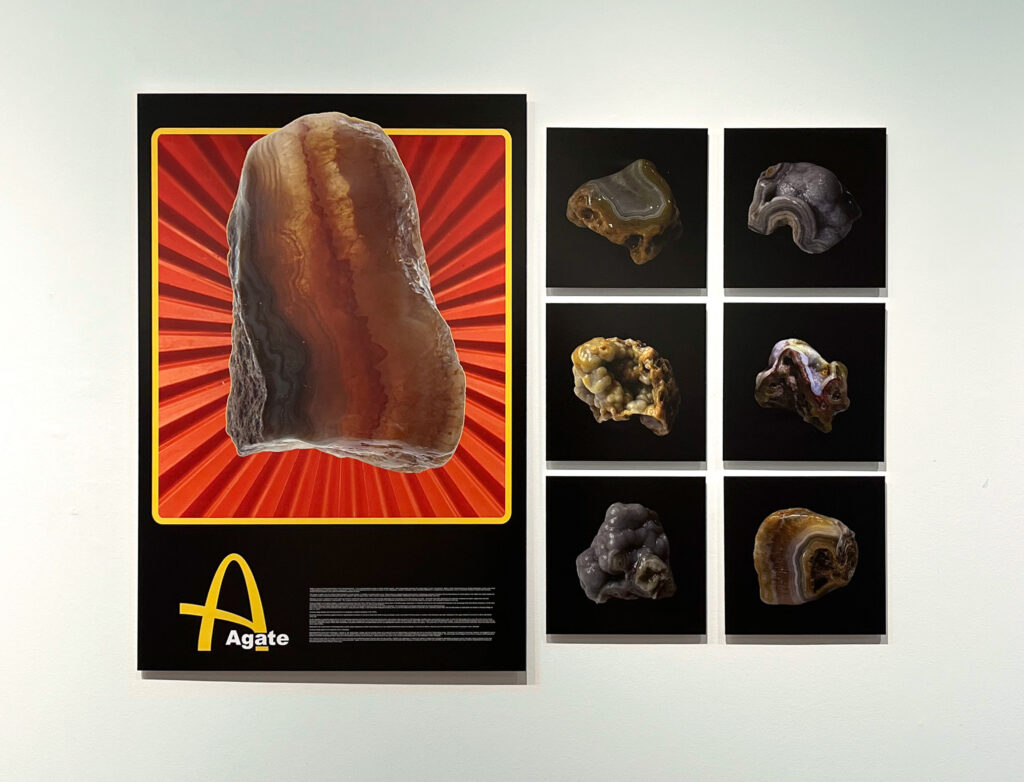
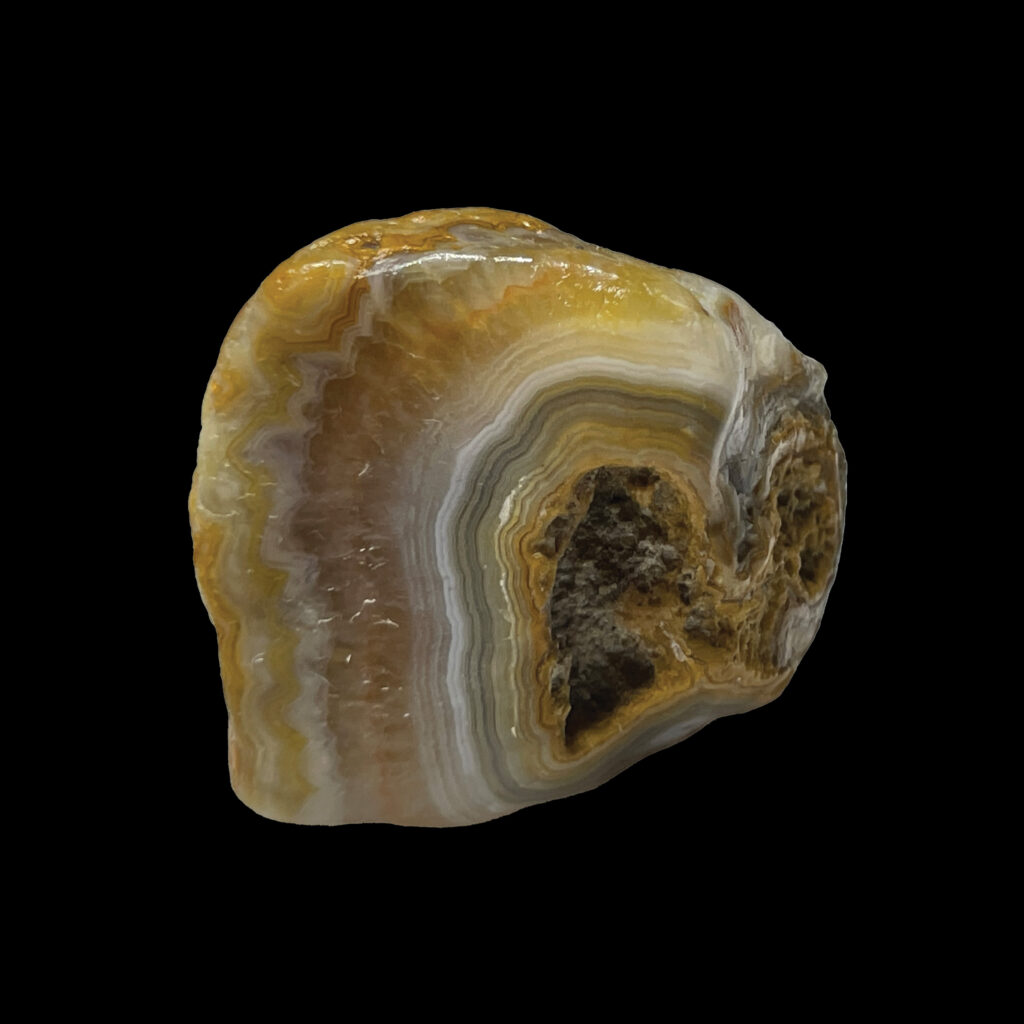
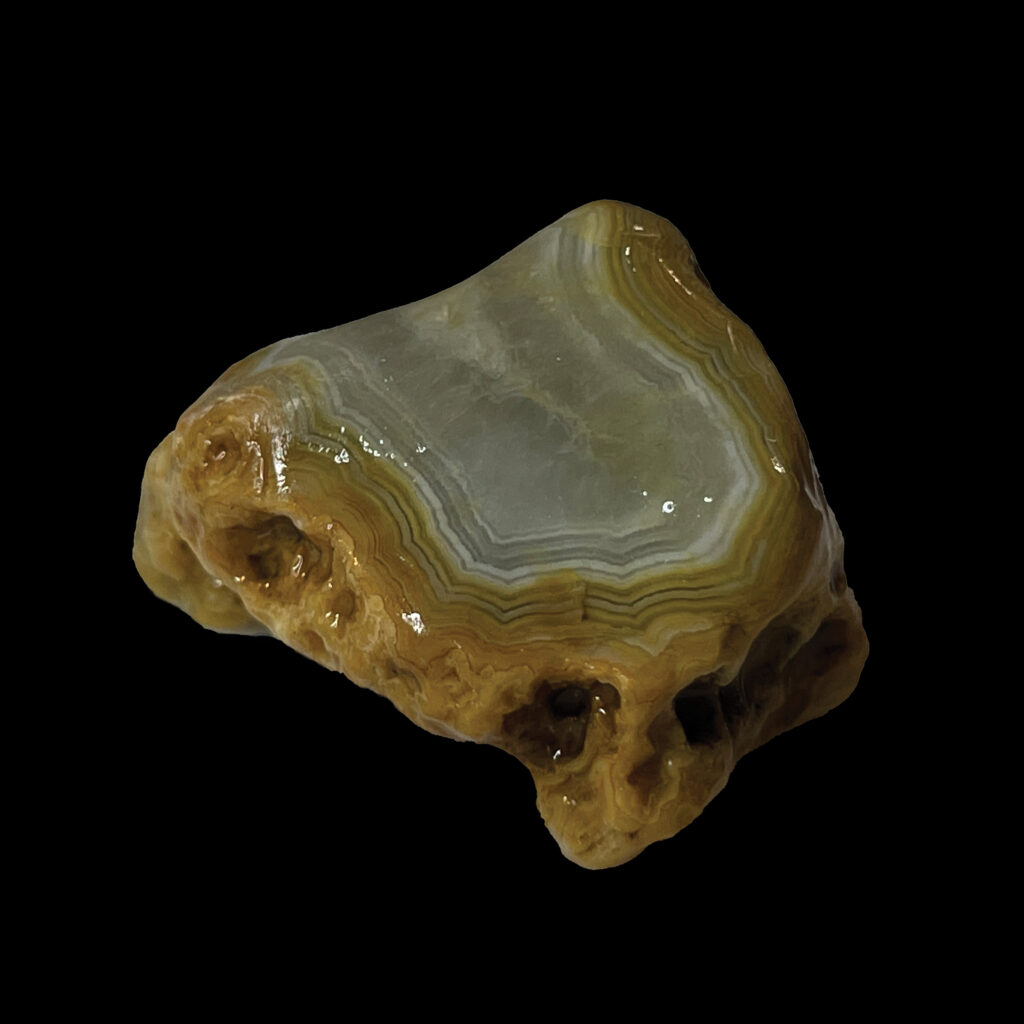
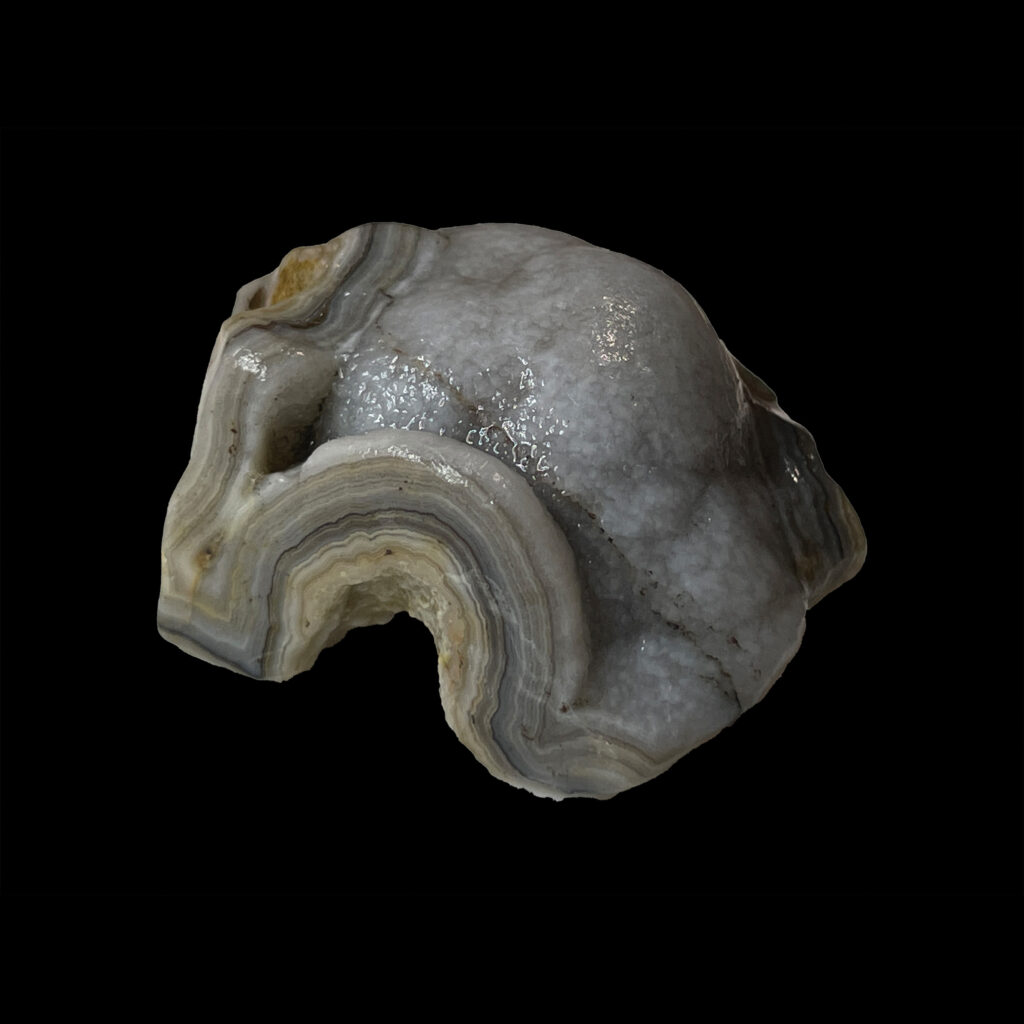
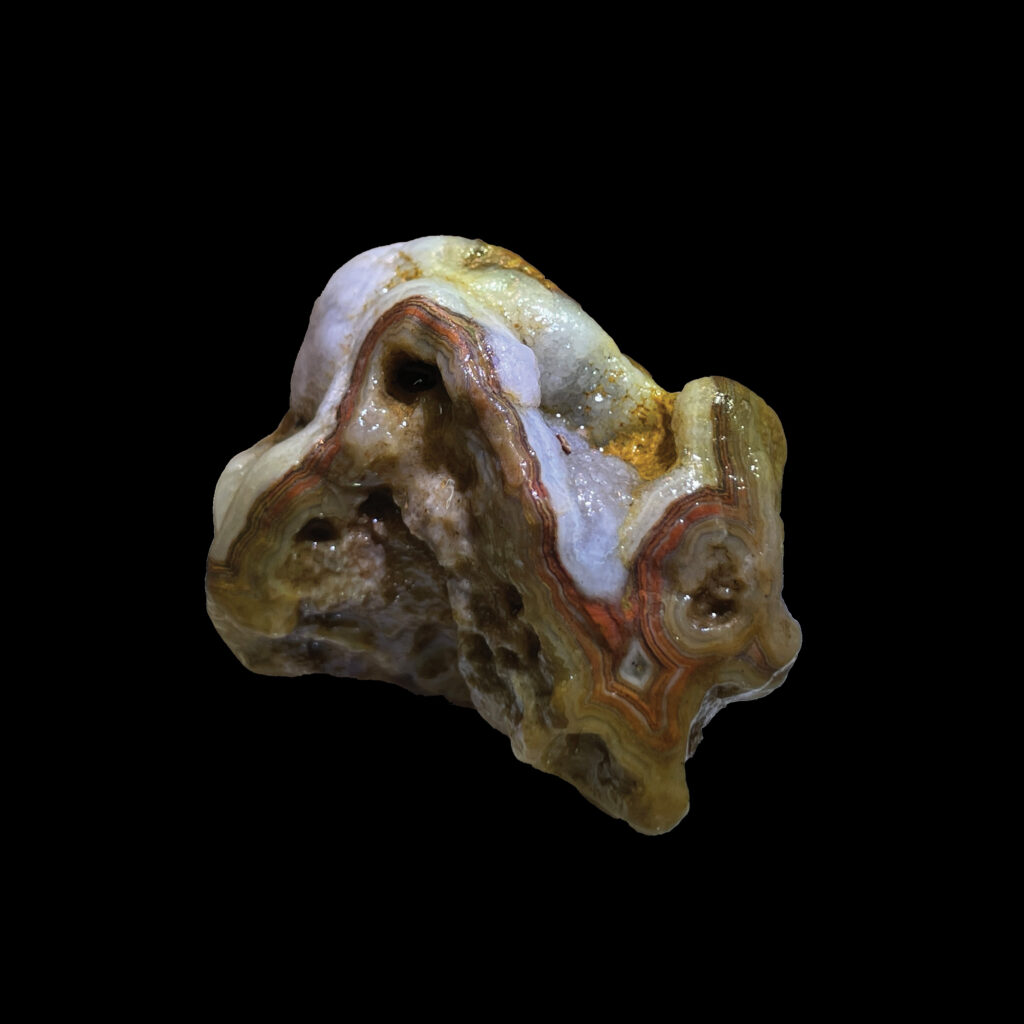
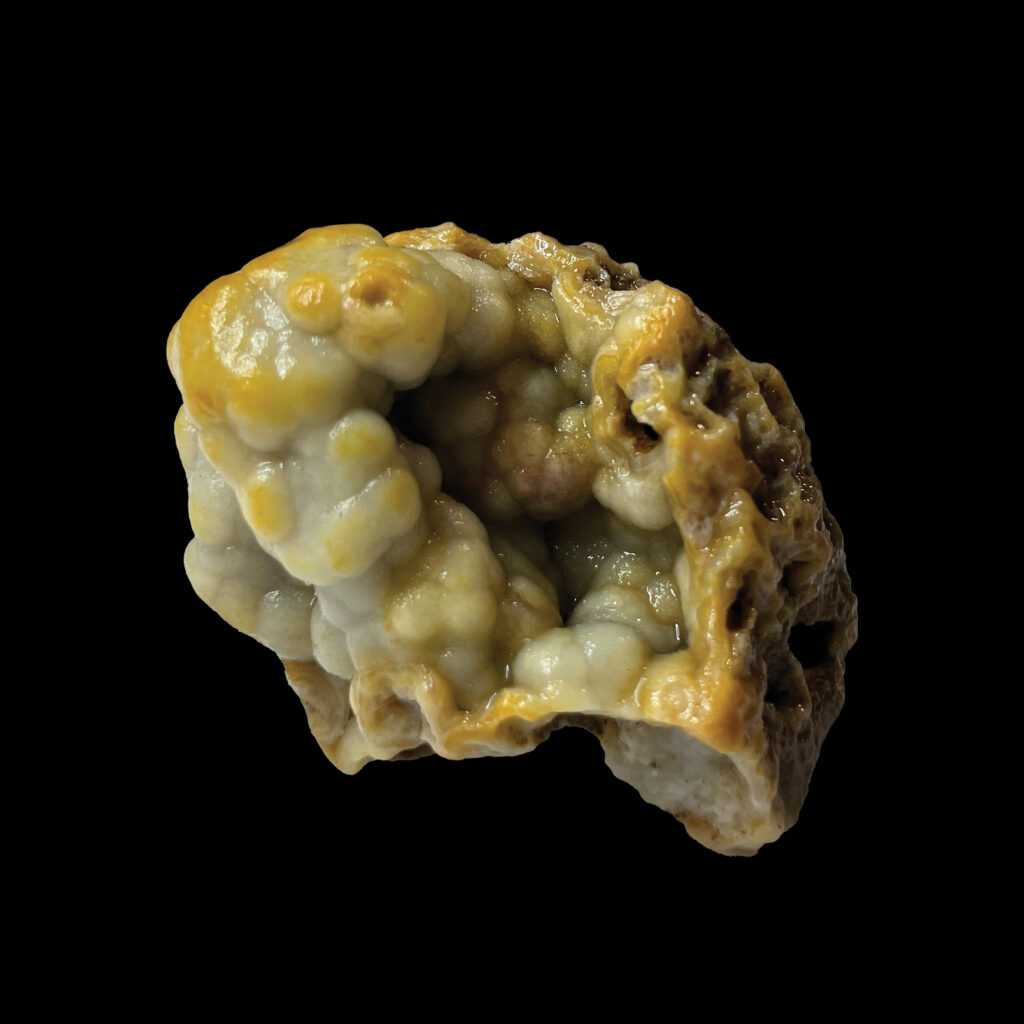
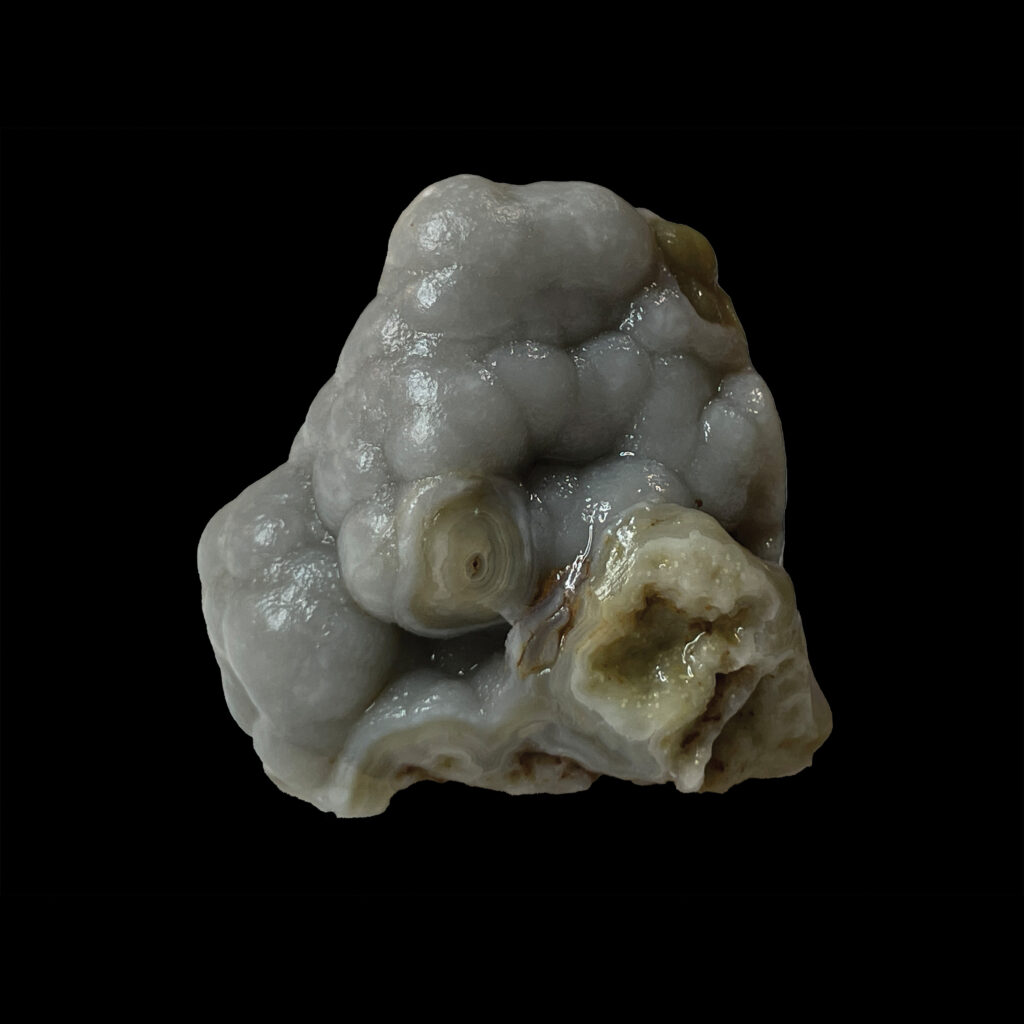
Why are you here, Agate?, 2024
Digital Print on foam core
40” X 51” X 1”
Finding Crowley Ridge Agates in the landscaping rocks of a Novi, Michigan McDonald’s drive-through, made me think “Why are you here, agate?” This question opens an infinite amount of additional contextual questions regarding our geological, historical and cultural existences. Each of which can be subdivided into additional categories such as plate tectonics, glacial erosion, landscape design, and human migration to name a few.
Agate is a type of mineral that belongs to the chalcedony family. It is a cryptocrystalline variety of silicon dioxide (quartz), with a fine-grained structure and a wide range of colors and patterns. Agate is often characterized by its banded appearance, which is the result of alternating layers of different mineral compositions. These are principally the result of traces of oxides of iron, manganese, titanium, chromium, nickel, and other elements. It is categorized as a mineraloid, which is a rock-like formation created when minerals interact and are exposed to the same environmental pressures as rocks.
The origins of agate rock are similar to that of geodes. A cavity, pocket, or chamber is located inside a rock. These holes are created through various means, including gas chambers forming in the lava that hardens to create igneous rock. Water and carbon dioxide are contained in these pockets and eventually leave the chambers. Only the gaps remain. Other sources include pockets created between sedimentary layers and animal interactions with rock.
Although, the basic conditions for which agate are formed is understood, geological science does not fully understand all of the details of how they develop over time. And unlike may other gemstones like diamonds, emeralds and rubies, agates have not been successfully been synthesized in laboratories. The complex structures and microscopic textures involved in the molecular growth patterns of the silica that makes up the agate, still confounds scientists to this day.
Crowley’s Ridge (also Crowleys Ridge) is a geological formation that rises 250 to 550 feet (170 m) above the alluvial plain of the Mississippi embayment in a 150-mile (240 km) line from southeastern Missouri to the Mississippi River near Helena, Arkansas. It is the most prominent feature in the Mississippi Alluvial Plain between Cape Girardeau, Missouri, and the Gulf of Mexico.
This narrow rolling hill region rising above the flat plain is the sixth, and smallest, natural division of the state of Arkansas. The southern part is protected within Ozark–St. Francis National Forest.
Most of the major cities of the Arkansas Delta region lie along Crowley’s Ridge. It was named after Benjamin Crowley, known as the first American settler to reach the area, sometime around 1820. The Civil War Battle of Chalk Bluff was fought on Crowley’s Ridge on May 1–2, 1863.
Crowley’s Ridge Agates was first discovered at its namesake in northern Arkansas in the 1970’s.
Prevailing Theory is that these agates formed as hydrothermal intrusions of silica-rich steam that made its way up through cracks in the earth to fill the inside of cavities in the limestones and other sediments of the upper midwest as far back as 300 to 400 million years ago.
As the limestone eroded the agates fell out of the matrix(groundmass) and were then picked up by ancient rivers and streams, (the precursors to the Mississippi and Ohio rivers which used to run to east of where the Mississippi river is now) they were tossed, broke, ground and smoothed into the shapes they are today. As the rivers changed their course they left behind the rounded gravel in their empty riverbeds where they were covered with sand and sediment for ages. In the last few hundred thousand years new rivers such as the Amite, Tangipahoa, Bogue Chitto, Pearl, Homochitto and others carved their own paths down into the soil exposing the ancient river gravel that contains the agates. The gravel bars of those rivers and the commercial gravel pits along their shores are where we find those agates today…
Deposited in the alluvial plain of Mississippi River system, these semiprecious stones can be found in all of the states bordering the delta from Missouri to the Gulf of Mexico…they can also be found at the McDonald’s restaurant in Novi, Michigan.
Crowley’s Ridge Agate do not naturally occur in Michigan.
Aggregated from gravel pits in Arkansas, a variety of tan, dark browns, orange, and rust colored stones are trucked all over the United States and Canada and sold as decorative landscaping stones. Truckloads are shipped to landscape suppliers and bagged for sale at home improvement retailers. Cedar Blend, Golden Gravel, Buffalo River Rock and Ozark Creek Rock are names of some of the varieties of decorative stones that contain Crowleys Ridge Agates. The Home Depot offers bagged stones from a company called Southwest Boulder and Stone called Mojave Gold…these are from Arkansas and they contain Crowleys….Walnut Gravel is the name of the sourced landscaping stone at the McDonalds in Novi, Michigan.
This variety of gravel gets its orange color from iron in the clay and sedimentary bodies that the rocks are dug up from. Together this aggregate is coated and stained in orange hues throughout. Depending on the how porous and hard a stone or mineral is the color may wear off overtime through seasons of rain and precipitation. Agates are relatively hard and left uncovered will often shed sedimentary staining…so among the orange rocks you may find a gem….from 400 million years ago…formed in hydrothermal intrusion of limestone bedrocks below shallow ocean seas…